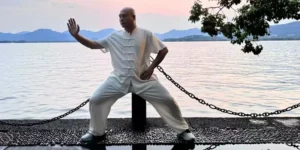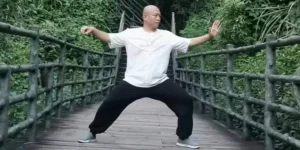About how beginners start practicing Tai Chi, some people say to start with the 24-posture Tai Chi or to learn step by step from online courses. Some people say that you must Zhanzhuang when practicing Tai Chi to strengthen your lower limbs, but others say that you need to practice your waist and legs before practicing other movements.
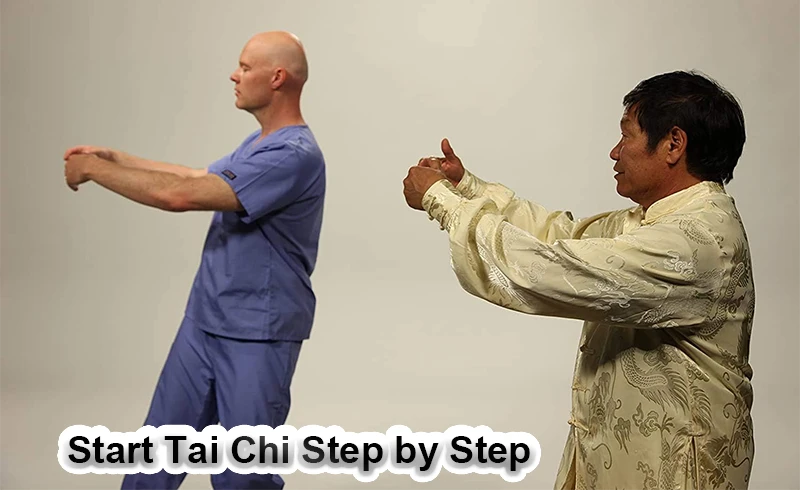
You must be confused: How should you start practicing Tai Chi? I will help you solve it!
Why Tai Chi Benefits Beginners and Everyone?
Tai Chi for beginners is good for accessibility and foundation. It’s gentle on joints and muscles, making it ideal for beginners or everyone. Allowing beginners to build strength, flexibility, and balance without strain.
- Balance: Reducing fall risk (especially in older adults).
- Flexibility and strength: Improves muscle tone and joint mobility through tai chi movements.
- Cardiovascular health: Gentle aerobic exercise supports heart health and circulation.
- Stress and anxiety reduction: Meditative focus lowers cortisol levels and promotes relaxation.
- Adjust mood: Releases endorphins, combating depression and boosting emotional resilience.
- No equipments: Practiced anywhere, making it cost-effective and convenient.
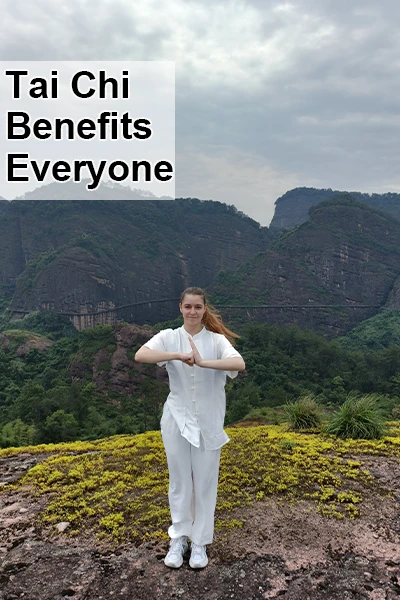
Beginners should learn correct forms from qualified couches and teachers to avoid strain. Regular practice maximizes benefits, though even short periods of practice can have a positive effects.
How To Start Tai Chi At Home?
Step 1: Before learning Tai Chi, you must first learn the theory of Tai Chi. It is impossible to really get started with any sport without learning the basic knowledge. Tai Chi For Beginners is a must-read article for tai chi practitioners.
Step 2: Practicing Tai Chi should start with the basics, not Zhanzhuang, learning 24 Tai Chi movements, or practicing the legs and waist. Instead, you should master the basic rules of Tai Chi by learning a single moves. For example, the simple movements created by Shen Jiangfei can help you quickly get started with Tai Chi.
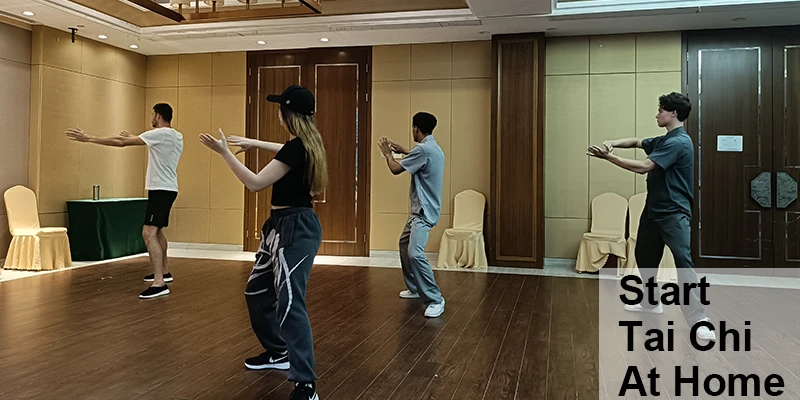
In addition, if you practice Tai Chi at home, you need to do warm-up exercises in advance. It only takes 5 minutes to exercise your entire body at home. This warm-up is “squatting“. As long as the squatting method is correct and the amplitude is right, it can keep your body healthy.
- Beggar Squat
- The squat is especially effective after a meal. The beggar squat is to squat with your hands on your knees, squat as far back as possible but not touching the ground, keep your waist, back and head in a straight line, close your mouth when inhaling, and slightly open your mouth when exhaling.
- Each squat should last for about 15 minutes or longer. Do not think about anything else, talk to others, or play with your phone. It is normal to feel numbness in your feet during squatting, which will subside with more practice.
- Squat with Chair
- Use your back and waist to lean against the back of the chair, and do not let your hips fall below your knees. Keep still after squatting. The exercise time can be gradually extended to 2-4 minutes, which can protect the knee joints.
- Toe Squat
- The front of both feet touches the ground, and the heels are away from the ground. Bend both knees, and press the thighs on the calves. The time is controlled within 30 seconds to 1 minute.
- Lunge Squat
- The practitioner steps out with your left foot, and the toe of the right foot touches the ground to squat with the toes, and the two legs form a lunge. Put the body weight between your two feet, and switch the left and right feet every 30 seconds. When squatting with a lunge, your hip muscles will be used, thereby achieving the effect of promoting blood circulation in the hips.
- Squat Walk
- Squat down and hug your knees, then keep walking forward.
Step 3: Shen Jiangfei Martial Arts Center has established summer camps and regular training offline courses. Coach Shen will not only teach you Tai Chi theory, but also teach you Tai Chi beginners’ skills, allowing you to experience Tai Chi yourself. It will take you as little as one week to get you on the right path to Tai Chi.
Best Online Course for Learning Tai Chi Step By Step
>> Basic Tai Chi Class for Everyone: Dr Paul Lam Tai Chi Practice.
>> 5 Minute Tai Chi form for beginners: Tai Chi for Beginner’s.
>> Tai Chi Qigong and Meditation: Yang Style 24-Posture Tai Chi and 8 Duan Jin Qigong.
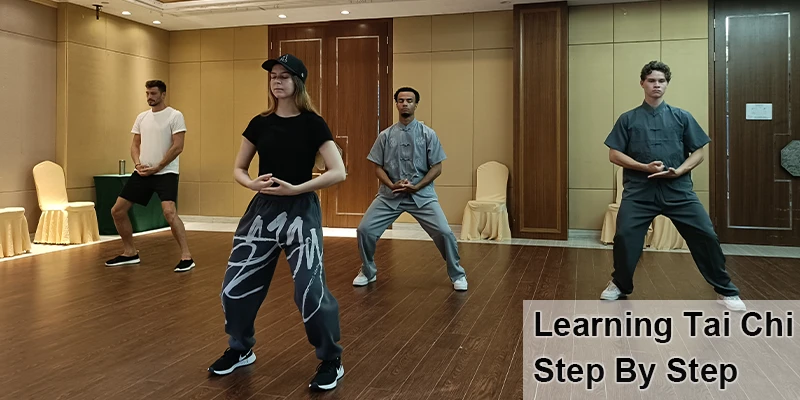
Key for Beginners Starting Tai Chi
For beginners who are learning Tai Chi for the first time, the following 5 key tips can help you avoid misunderstandings and improve your practice results:
Align posture with body
- Keep your spine naturally upright, lift head slightly, relax your shoulders and sink, bend knees slightly, and evenly distribute center of gravity on your feet. Practice “Zhanzhuang” statically first, feel the balance and relaxation of the body, and then gradually exercise other movements.
Movement And Breathing Together
- When you are a beginner, you don’t need to deliberately control your breathing. Inhale as the movement stretches, and exhale when it contracts or sinks. Make your movement smoother and reduce tension through the rhythm of breathing.
Start With Slow Practice
- The core of Tai Chi is “slow practice.” First master the single form, and then connect them into a routine after proficiency. Pay attention to the continuity and roundness rather than the appearance standard.
Relax Your Body And Mind
- Tai Chi focuses on “relaxation and sinking,” especially in the joints such as shoulders, elbows, wrists, and hips. Abandon ”exercise muscles” and imagine the movements as gentle and continuous as paddling in the water.
Follow Professional Guide
- The beginners choose an experienced Tai Chi coach to correct the details of the movements and avoid wrong habits. If you learn by yourself, choose an authoritative teaching video (such as Yang’s Tai Chi 24-style), practice with a mirror, and observe the symmetry of the movements.

